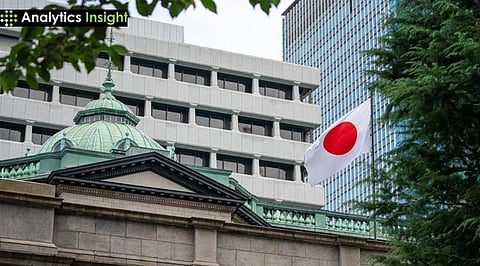

The Bank of Japan is preparing markets for a possible rate increase as the yen hovers near ¥156 per dollar. Officials now highlight inflation risks from currency weakness, rather than focusing on US growth worries.
A Reuters poll shows a narrow majority of economists expect a hike at the December 18 - December 19 policy meeting. Most of them project the policy rate at 0.75% by March as the BOJ normalizes settings.
The weaker yen lifts import costs and threatens to keep consumer prices elevated for longer. Policymakers fear that a prolonged slide in the currency could entrench higher underlying inflation and squeeze household spending.
The timing of any move remains sensitive because the Federal Reserve meets one week earlier. Fed signals on US rates could influence dollar-yen trading and shape how far Japanese officials feel they must go.
Prime Minister Sanae Takaichi met Governor Kazuo Ueda last week, which reduced political resistance to tighter policy. The meeting gave the central bank more room to respond to yen moves without appearing to undermine growth plans.
Inside the BOJ board, support for a rate hike has grown. Member Junko Koeda argued that real interest rates must rise further because prices have stayed relatively strong. Her comments suggest she is ready to join those backing a December move.
Board member Kazuyuki Masu said the timing of a hike is “nearing,” which pushed the five-year Japanese government bond yield to a 17-year high. Those remarks added to expectations that he could side with the hawkish camp that pressed for increases in September and October.
Governor Ueda has also shifted his wording. He told parliament the BOJ will discuss the feasibility and timing of a rate rise in upcoming meetings, instead of stressing that no preset schedule exists.
The change in tone helped the yen erase earlier losses on Wednesday, with the dollar slipping back below ¥156. Currency traders also watch for the risk of direct intervention from Tokyo, especially around the US Thanksgiving holiday, when liquidity often thins.
Japanese government bond yields have climbed as investors brace for tighter financial conditions and larger fiscal spending. The Takaichi administration recently approved a major stimulus package, which raises questions about Japan’s debt path and the pace of BOJ normalization.
The central bank’s latest report shows its exchange-traded fund holdings at a record market value of ¥83.2 trillion. The BOJ plans to sell those ETFs gradually, targeting about ¥330 billion per year by book value to avoid disrupting markets.
Together, the prospect of a rate hike, a weaker yen, higher bond yields, and a long-term ETF exit plan signal a clear turn in Japan’s monetary stance as USD/JPY trades near multi-decade highs.
